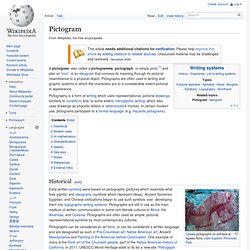

Investment casting. Inlet-outlet cover of a valve for a nuclear power station produced using investment casting Investment casting is an industrial process based on and also called lost-wax casting, one of the oldest known metal-forming techniques.[1] From 5,000 years ago, when beeswax formed the pattern, to today’s high-technology waxes, refractory materials and specialist alloys, the castings allow the production of components with accuracy, repeatability, versatility and integrity in a variety of metals and high-performance alloys.

Lost-foam casting is a modern form of investment casting that eliminates certain steps in the process. The process is generally used for small castings, but has been used to produce complete aircraft door frames, steel castings of up to 300 kg (660 lbs) and aluminium castings of up to 30 kg (66 lbs). It is generally more expensive per unit than die casting or sand casting, but has lower equipment costs. Hill fort. Maiden Castle in England is one of the largest hill forts in Europe.[1][2] Photograph taken in 1935 by Major George Allen (1891–1940).

Nomenclature[edit] The terms "hill fort", "hill-fort" and "hillfort" are all used in the archaeological literature. They all refer to an elevated site with one or more ramparts made of earth, stone and/or wood, with an external ditch. Many small early hill forts were abandoned, with the larger ones being redeveloped at a later date. Some hill forts contain houses. Similar but smaller and less defendable earthworks are found on the sides of hills.
Chronology[edit] They are most common during later periods: Urnfield culture and Atlantic Bronze Age[3] (c. 1300 BC – 750 BC) Bronze AgeHallstatt culture (c. 1200 BC – 500 BC) late Bronze Age to early Iron AgeLa Tene culture (c. 600 BC – 50 AD) late Iron Age Prehistoric Europe saw a growing population. Pictograph.jpg 900×600 pixels. Pictographsumerian.jpg 365×349 pixels.
Pictograph_2_tds.jpg 875×625 pixels. Pictogram. A pictogram, also called a pictogramme, pictograph, or simply picto,[1] and also an 'icon', is an ideogram that conveys its meaning through its pictorial resemblance to a physical object.

Pictographs are often used in writing and graphic systems in which the characters are to a considerable extent pictorial in appearance. Pictography is a form of writing which uses representational, pictorial drawings, similarly to cuneiform and, to some extent, hieroglyphic writing, which also uses drawings as phonetic letters or determinative rhymes. In certain modern use, pictograms participate to a formal language (e.g. Hazards pictograms). Historical[edit] Early written symbols were based on pictographs (pictures which resemble what they signify) and ideograms (symbols which represent ideas).
Some scientists in the field of neuropsychiatry and neuropsychology, such as Prof. Ideogram. "No Dogs!

" sign in Spain. The dog illustration is a pictogram. The red circle and bar is an ideogram representing the idea of "no" or "not allowed". An ideogram or ideograph (from Greek ἰδέα idéa "idea" + γράφω gráphō "to write") is a graphic symbol that represents an idea or concept. Some ideograms are comprehensible only by familiarity with prior convention; others convey their meaning through pictorial resemblance to a physical object, and thus may also be referred to as pictograms. Bronze Age. Diffusion of metallurgy in Europe and Asia Minor.

The darkest areas are the oldest. The Bronze Age is a time period characterized by the use of copper and its alloy bronze and proto-writing, and other features of urban civilization. The Bronze Age is the second principal period of the three-age Stone-Bronze-Iron system, as proposed in modern times by Christian Jürgensen Thomsen, for classifying and studying ancient societies. An ancient civilization is defined to be in the Bronze Age either by smelting its own copper and alloying with tin, or by trading for bronze from production areas elsewhere. Copper-tin ores are rare, as reflected in the fact that there were no tin bronzes in western Asia before the trading in bronze began in the third millennium BC. Bronze Age cultures differed in their development of the first writing.
History[edit] Near East[edit] Southwest Asia / Middle East The Bronze Age in the ancient Near East began with the rise of Sumer in the 4th millennium BC.